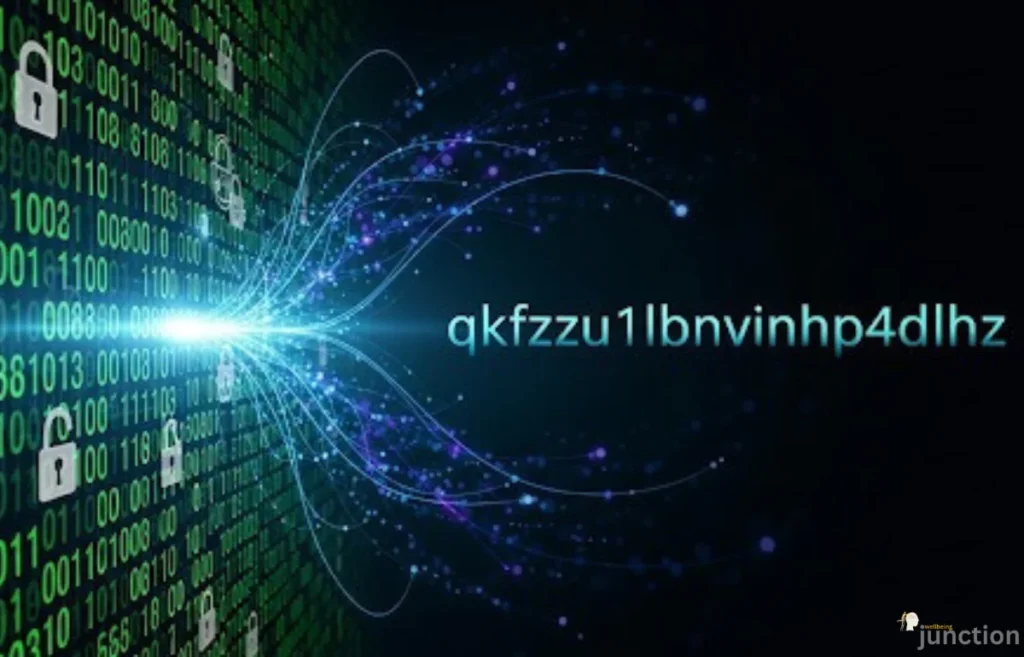In the modern digital age, encountering seemingly random strings of characters such as “qkfzzu1lbnvinhp4dlhz” might leave many scratching their heads. At first glance, these alphanumeric sequences appear as meaningless gibberish. However, beneath their cryptic surface lies a crucial role in the infrastructure of the internet and digital platforms. These strings are not random; they are unique identifiers, playing an essential role in everything from secure authentication to personalized content delivery.
In this article, we will explore the role of “qkfzzu1lbnvinhp4dlhz” and similar identifiers, how they are created, their growing visibility, and their increasing importance in maintaining privacy and supporting digital innovation.
What is “qkfzzu1lbnvinhp4dlhz”?
“qkfzzu1lbnvinhp4dlhz” is an example of a randomized alphanumeric string that functions as a unique identifier in various digital systems. These strings are designed to be unpredictable and difficult to guess, ensuring that they can be used for specific tasks such as securing user sessions, protecting sensitive data, and categorizing content on digital platforms.
These identifiers are commonly used behind the scenes in digital processes. For example, when you receive a secure email or reset your password, the link or code in the message may include a string like “qkfzzu1lbnvinhp4dlhz.” While the string itself may look random, it serves a critical purpose: ensuring security, privacy, and precision in tracking or organizing data.
How Are These Identifiers Created?
Generating a string like “qkfzzu1lbnvinhp4dlhz” isn’t something you’d do by hand. It involves the use of cryptographic functions, random number generators, or hashing algorithms. These methods ensure that the string is statistically unique, making it almost impossible to predict or replicate. The purpose of this randomness is to create identifiers that are secure, reliable, and resistant to being spoofed or guessed.
For instance, programming languages such as Python, JavaScript, and Java come with built-in libraries that allow for the generation of these strings. These functions can produce high-entropy output, meaning the chances of generating the same identifier twice are incredibly slim. Some of these strings may also be encoded in formats like Base64 or hexadecimal for ease of storage and transmission across various systems.
Where Do You Encounter “qkfzzu1lbnvinhp4dlhz” in the Digital World?
While identifiers like “qkfzzu1lbnvinhp4dlhz” often operate behind the scenes, they are becoming more visible due to the digital privacy trends and the rise of niche content curation. Let’s take a look at some of the common places where you might encounter these alphanumeric strings:
1. Secure Authentication Links
When you reset your password or request an email verification, you may receive a link that contains an identifier similar to “qkfzzu1lbnvinhp4dlhz.” This string serves as a one-time code to confirm that the action is legitimate, without exposing sensitive user data like passwords or personal details.
2. Cloud Storage and File Management
In cloud storage systems, each file you upload is typically assigned a unique identifier. These identifiers ensure that the system knows exactly which file you are referring to when you request access, sharing, or modification. The string “qkfzzu1lbnvinhp4dlhz” might appear in the URL of the file you wish to share, ensuring that only authorized users can access it.
3. Social Media and Content Platforms
Social media platforms like Instagram, TikTok, or YouTube might use similar strings as hidden tags for content curation. For example, creators can use these identifiers to categorize their posts or videos, without using visible hashtags. These hidden tags may help organize content into niche categories, allowing users to discover tailored content that is not readily visible to the broader public.
4. Marketing Campaigns and Product Testing
In the business world, companies use unique identifiers to run targeted campaigns, especially in the context of A/B testing or soft launches. Marketers might use codes like “qkfzzu1lbnvinhp4dlhz” to test how a small group of users responds to a new feature or product without revealing it to the general public.
Why Are These Identifiers Important for Privacy and Security?
Enhancing Digital Security
Using strings like “qkfzzu1lbnvinhp4dlhz” is a key way to boost security. These identifiers often serve as tokens that confirm user actions, such as logging into an account or making a financial transaction, without the need to expose sensitive data. The string is designed to expire after a short period, ensuring that it cannot be used maliciously after its intended purpose has been fulfilled.
Since the identifiers are cryptographically generated and random, they offer a robust method of securing digital systems, protecting against unauthorized access, and ensuring that user credentials and sensitive data are never exposed unnecessarily.
Enabling Data Privacy
With privacy regulations like GDPR (General Data Protection Regulation) and CCPA (California Consumer Privacy Act) gaining traction, businesses need a way to track and analyze user behavior without violating privacy laws. Unique identifiers like “qkfzzu1lbnvinhp4dlhz” help businesses monitor performance and user interactions while maintaining anonymity. These strings allow systems to track users’ actions or preferences without ever storing personally identifiable information (PII), making them essential for businesses that need to balance data collection with user privacy.
The Growing Visibility of Randomized Identifiers
As trends in data privacy and security continue to evolve, identifiers like “qkfzzu1lbnvinhp4dlhz” are becoming more visible, even though they are still used mainly behind the scenes. The rise of social media, short-form videos, and niche communities has made these identifiers more common, as creators and businesses use them to organize content, run targeted campaigns, and ensure security.
These codes are particularly valuable in scenarios where privacy is a top priority. For example, marketers can use them to track specific audience segments or soft-launch products in a controlled environment, without alerting the general public. Similarly, creators can build exclusive content ecosystems around these hidden identifiers, ensuring that their audience enjoys a personalized, targeted experience.
Table: Common Use Cases of “qkfzzu1lbnvinhp4dlhz” Identifiers
| Use Case | Description | Example |
|---|---|---|
| Secure Authentication | Unique identifier used to verify user actions like password resets or account verification. | Link to reset password or verify account. |
| Content Organization | Helps categorize content on platforms like social media and video-sharing sites. | Hidden tag for categorizing niche content. |
| Tracking User Behavior | Anonymously tracks user activity and engagement without storing personal data. | Used in A/B testing or targeted marketing campaigns. |
| File Management | Assigns unique identifiers to uploaded files in cloud storage for easy retrieval and access. | URL link to access specific file. |
| Marketing Campaigns | Enables businesses to track responses to product launches or promotions without revealing them to the public. | Code used in a soft-launch campaign or pre-release. |
Conclusion: The Crucial Role of Identifiers Like “qkfzzu1lbnvinhp4dlhz”
Though strings like “qkfzzu1lbnvinhp4dlhz” may appear meaningless at first glance, they are far from random. They play an essential role in the digital ecosystem, ensuring security, privacy, and personalized experiences. From safeguarding your online accounts to helping creators build targeted communities, these unique identifiers are vital to our daily digital interactions.
As we continue to navigate the complexities of data privacy, security, and digital content, the significance of strings like “qkfzzu1lbnvinhp4dlhz” will only grow. By understanding their function, both users and businesses can make better-informed decisions about how to protect and engage with digital systems.
Next Steps
As we move forward in an increasingly digital world, it’s important to remain vigilant about the ways in which our data is used and tracked. Understanding the role of unique identifiers like “qkfzzu1lbnvinhp4dlhz” can help you take more control of your online privacy and security. Consider exploring how these identifiers might be used in the apps and platforms you engage with, and make informed choices about your digital interactions.
FAQ about “qkfzzu1lbnvinhp4dlhz”
1. What does “qkfzzu1lbnvinhp4dlhz” represent?
It’s a randomized alphanumeric string that serves as a unique identifier in various digital processes, ensuring secure tracking and organization of data.
2. How is “qkfzzu1lbnvinhp4dlhz” generated?
This identifier is generated using cryptographic algorithms or random number generators, ensuring its uniqueness and unpredictability.
3. Where can I encounter such strings in daily life?
You may see these identifiers in secure authentication links, cloud storage URLs, social media tags, or marketing campaign tracking.
4. How do these identifiers protect privacy?
They allow systems to track behavior or verify actions without revealing personal data, which helps comply with privacy regulations like GDPR.
5. Can these identifiers be used for malicious purposes?
While they serve a crucial role in security, it’s important to be cautious when clicking on links that contain such strings from untrusted sources, as they could be spoofed by malicious actors.
Learn About TimeWarp TaskUs

Ton Roobprom is an experienced writer focused on practical advice across technology, business, travel, beauty, lifestyle, and home improvements. He specializes in distilling complex subjects into clear, actionable insights to help you enhance your daily life.


